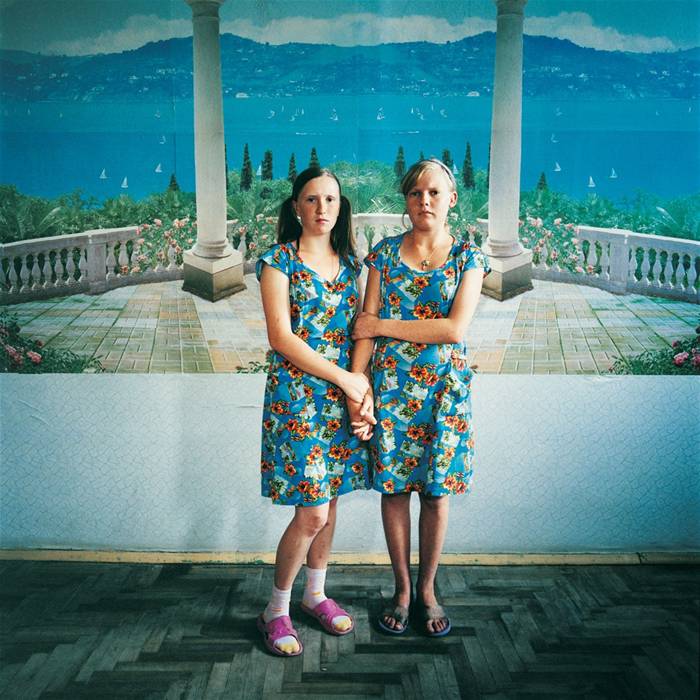by Cecilie Oedegaard
As I’ve previously mentioned in our class my thesis work is dealing with my personal experience of coming to Israel, trying to settle down here. At times I feel completely isolated as nothing resemble life as I know it from Norway and connecting to people, their society and culture seems impossible. In an attempt to better understand and connect with the Israelis I decided to take a closer look at their artistic practices in contemporary photography. I’m interested in learning what are the differences and similarities (if any) between Israeli contemporary photographers and Nordic contemporary photographers. I think a part of me is hoping to actually find similarities that will enable me to bridge the gap between two seemingly disparate worlds.
To start my research project off I came across an amazing Israeli photographer called Michal Chelbin who’s work I’m truly impressed by. Her work is widely known outside of Israel. It has been exhibited worldwide and she is currently represented by the Andrea Meislin Gallery in NYC. Chelbin is first and foremost a portrait photographer whose work has been likened to artists such as Diane Arbus and August Sander. Furthermore, her work exhibit use of an intense and beautiful colour palette referencing her influence by the great masters of painting such as Caravaggio and Velasquez.
What fascinates me about Chelbin, beyond the visual aesthetics of her work is her background and how it feeds into her artistic practice. Chelbin was born in Haifa, Northern Israel and her dad and grandmother were Holocaust survivors, the only ones from a large family. Her dad was born in the Ukraine and he was only two years old when World War 2 broke loose during which he hid with his mother in farms all over Easter-Europe in order to escape the Nazis. They moved to Israel when the war ended. Chelbin states that seeing old black and white family portraits of the rest of her family that were murdered in the war (of whom her grandmother refused to speak) might have sparked her interest in portrait photography.
Chelbin’s third monograph entitled "Sailboats and Swans» (published in 2012) is a portrayal of inmates from seven different prisons in Russia and the Ukraine. In addition to having roots in the Ukraine, the second factor that drew her to photograph in those countries were the people she had been photographing in Israel as a student. They were mostly immigrants from the former Soviet Union that had made ‘’Aliya’’ (Jewish immigration) during the 90s after the collapse of the former USSR (Union of Soviet Socialist Republics). In an interview with instituteartist.com Chelbin explains that she is inspired by people and especially people from the former Soviet Union as she finds them to be full of contradictions, ‘’tough on the outside but warm on the inside’’. I found it particularly interesting that Chelbin (in the same interview) drew parallels between her photographic subjects’ expressions and dark Northern fairytales, like what can be seen in old Bergman movies.
Chelbin engages with the photographic medium by means of an assisted-reality approach. She directs her subjects and she carefully choses location and lighting. On one hand she works in a planned manner, however on the other hand she is largely driven by intuition letting one thing lead to another. When making the Sailboats and Swans series she spent hours with each sitter, but she would only ask about their crime until after the session was over, trying to see the person beyond his or her crime. She finds people immensely inspiring and says that to her they are mysteries to be solved and a world of contradictions to be discovered. In The Sailboats and Swans series the visual contrast between the wallpaper and the appearance of the sitter is striking and I believe, alludes to the contradiction between the person and his/her crime. This visual contrast seem to play an important role in communicating her intent as she also references the wallpaper in the title of the work.
Reading about Chelbin and her artistic practice I couldn’t help but wonder if her fascination for contrasts and contradictions somewhat are caused by her upbringing in Israel, being a country pervaded by contradictions.
I think Chelbin shows a similar interest in themes such as complexities of youth, identity and family issues to what I’ve seen in work by Nordic photographers. Being universal issues they are inherently not limited by geography, society and politics. I did however find a similar interest in the dark, raw, unconcealed aspects of life and society to what I feel represent Nordic trends and traditions.
Having discovered Chelbin’s work I’m intrigued to continue my research for our next blog post through which I’ll take a closer look at Swedish photographer Anders Petersen, who has also documented life behind bars with his series Fängelse (Prison).
Sources cited:
http://www.instituteartist.com/interview-Michal-Chelbin
http://roadsandkingdoms.com/2013/in-prison-in-pictures/
http://nymphoto.blogspot.co.il/2008/09/conversation-with-michal-chelbin.html
https://timeout.co.il/en/art-and-culture/one-one-exclusive-interview-israeli-photographer-michal-chelbin



